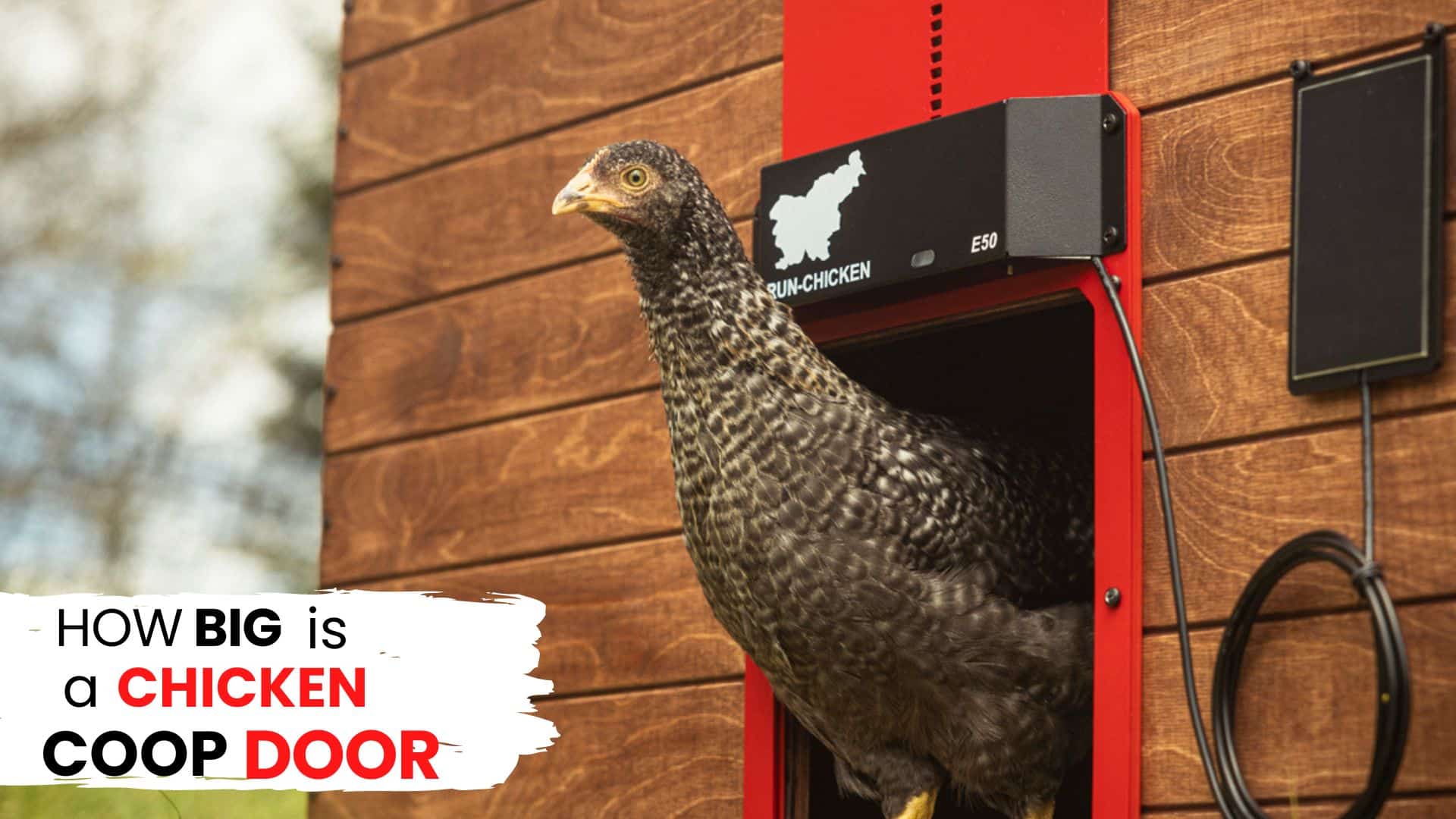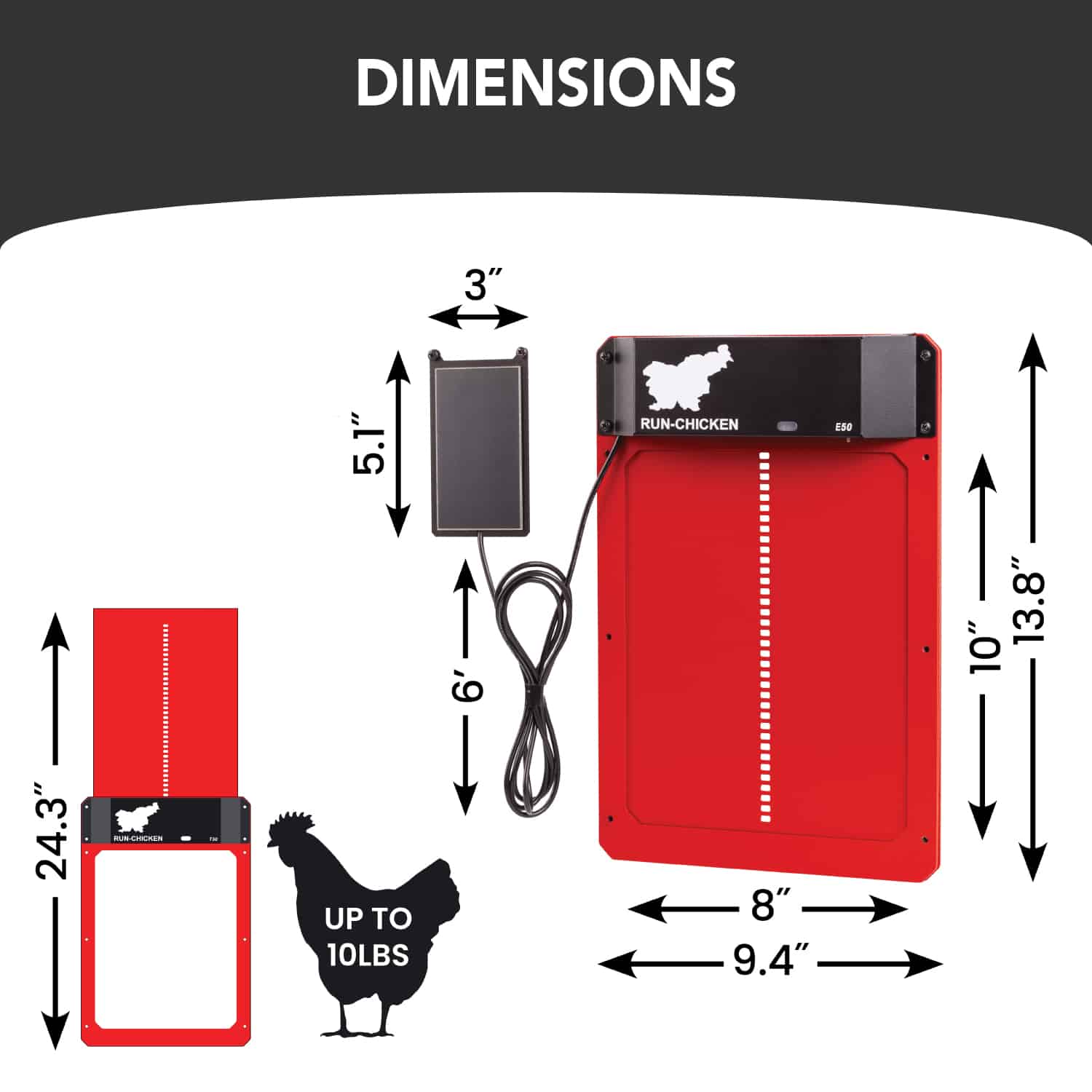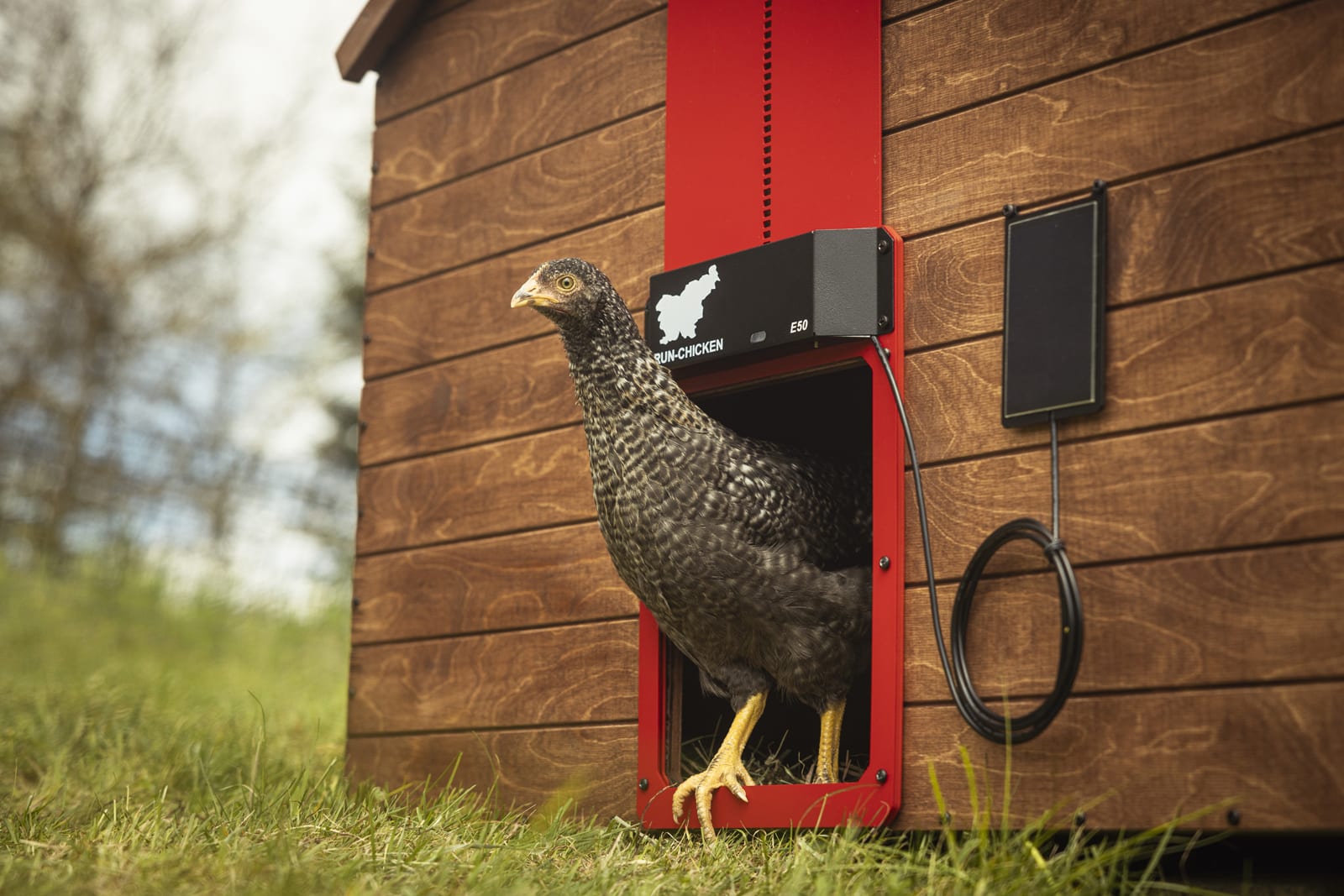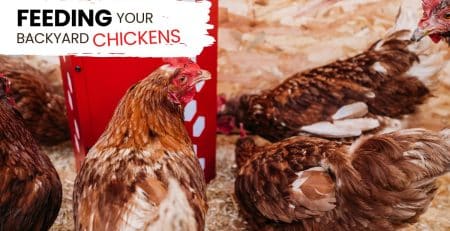Ever wondered how big is a chicken coop door? Or how big should it be? Well, a well-designed and appropriately sized chicken coop door plays a crucial role in maintaining the safety, comfort, and convenience of your flock. It serves as a gateway between the coop and the outside world, allowing chickens to access their outdoor run, find food and water, and explore their surroundings.
Selecting the right size for your chicken coop door is a decision that impacts both the welfare of your chickens and the overall management of your coop.
Here’s what you need to know about a chicken coop door:
Impact on Chicken Safety, Comfort, and Convenience
The size of the chicken coop door directly affects the well-being of your feathered friends. If the door is too small, chickens might struggle to enter or exit comfortably, causing stress and potential injuries. On the other hand, an oversized door might compromise the security of the coop, exposing chickens to predators. Furthermore, an appropriately sized door can enhance the convenience of daily coop management for poultry keepers, facilitating easier access for feeding, cleaning, and egg collection.
How Big Should a Chicken Coop Door Be – Optimal Dimensions
Width and Height Considerations
A width of 9-12 inches allows a single chicken to pass through comfortably. This ensures that most chickens can enter and exit the coop without difficulty.
Chicken breeds have varying heights, so the coop door’s height should be adjusted accordingly. A height of 10-14 inches accommodates most breeds without causing them to stoop or squeeze through.
Clearance Space
The door should provide ample clearance space to avoid collisions and ensure that chickens can move in and out without feeling cramped.
Tight doorways can lead to injuries, feather damage, and stress. An appropriately sized door with enough clearance reduces the risk of such issues.
Types of Chicken Coop Doors
Manual Doors
Manual doors are operated by poultry keepers and can be as simple as a hinged panel. They offer direct control but require consistent human intervention.
Manual doors provide a hands-on approach but demand daily attention. They’re cost-effective but may not suit busy schedules.
Automatic Doors
Automatic doors operate on timers, light sensors, or remote controls. They offer convenience and security while reducing the need for constant monitoring.
- Benefits of Automation: Convenience, Security, and Consistency Automated doors ensure chickens have access to the outdoors at appropriate times, enhance coop security during the night, and offer consistent management.
- Role of Technology in Modern Coop Management: Technological advancements have transformed coop management, making automated doors an attractive option for poultry keepers.
The fear of the door being too small for the chickens is unnecessary with RUN-CHICKEN models
Run-Chicken Automatic Coop Door! The Best Solution
The Run-Chicken door is a cutting-edge automated solution designed to address size and safety concerns efficiently.
- Features and Functionalities: The Run-Chicken door incorporates advanced features like programmable timers, sensor-based operation, and adjustable settings for different chicken breeds.
- How the Run-Chicken Door Addresses Size and Safety Concerns: This automated door ensures that the dimensions are appropriate for various breeds, and its sensor-based operation enhances coop security.
Dimensions of Run-Chicken Coop Door Model T50 (L x W x H):
13.8” x 9.4” x 1.3” (350 mm x 238 mm x 33 mm).
Weight:
2 lbs. (0.907 kg).
Inside door “walk-through” dimension (L x W):
10” x 8” (254 mm x 203 mm).
Factors Influencing Chicken Coop Door Size
1. Chicken Breed and Size
- Variations in Chicken Sizes and Breeds: Chicken breeds vary significantly in size, with bantam breeds being much smaller than standard-sized breeds. When determining the size of your coop door, it’s essential to consider the largest chicken breed you have to ensure that all your chickens can easily enter and exit.
- The Need for Accommodating Different Types of Chickens: A one-size-fits-all approach won’t suffice when accommodating chickens of various sizes. The coop door should be wide and tall enough to accommodate both the smallest bantams and the largest standard-sized chickens comfortably.
2. Coop Design and Layout
- Types of Coop Designs: Coop designs vary from traditional stationary coops to mobile and modular setups. Each design influences the placement and size of the coop door. A mobile coop might require larger doors to allow easy movement, while a stationary coop can have a slightly smaller door.
- Impact of Coop Layout on Door Placement and Size: The internal layout of the coop also affects the positioning and size of the door. Roosts, nesting boxes, and feeding areas should be factored in when determining the best door location and dimensions.
3. Number of Chickens
- Scaling Door Size Based on Chicken Population: The number of chickens in your coop directly affects the door size. As the flock size increases, the door should also expand to prevent overcrowding during entry and exit times.
- Avoiding Overcrowding and Ensuring Adequate Space: Overcrowding at the coop door can lead to stress and potential injuries. A larger door ensures that multiple chickens can move through simultaneously without causing congestion.
4. Predator Threats
- Designing Doors to Keep Predators Out: Predator threats are a significant concern for chicken keepers. The coop door should be designed to prevent predators from accessing the coop while still allowing chickens to move freely.
- Balancing Security with Proper Ventilation: While security is paramount, ventilation is also essential for a healthy coop environment. A well-designed door should balance security against the need for adequate airflow.
Installation and Maintenance
Proper Installation
- Positioning the Door for Easy Chicken Access: Proper door placement facilitates seamless chicken movement, minimizing disruptions to their routine.
- Ensuring Proper Alignment and Functionality: Correct alignment ensures smooth door operation, preventing jams and malfunctions.
Regular Maintenance
- Cleaning Mechanisms and Tracks: Regular cleaning prevents debris buildup, which can affect the door’s performance.
- Checking for Wear and Tear: Routine inspections identify any signs of wear, allowing for timely repairs or replacements.
Addressing Technical Issues Promptly: Timely troubleshooting and maintenance guarantee that the door functions optimally, benefiting both chickens and keepers.
Final Words
Now that you know how big a chicken coop door is – get one for your beloved chicken! Remember that choosing the right size for your chicken coop door directly influences the comfort, safety, and convenience of your flock. Therefore, the adoption of Automated Solutions like the Run-Chicken Coop Door offer a modern and effective approach to coop management, streamlining daily routines while maintaining the well-being of your chickens.








